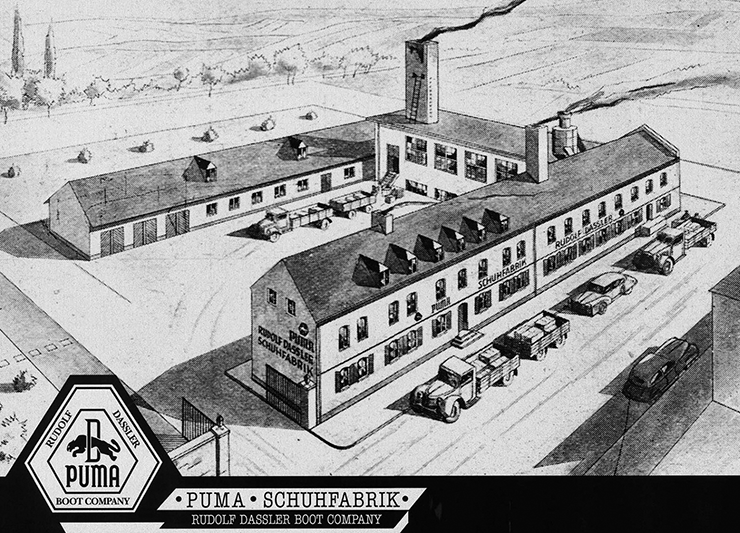
Rudolf Dassler (March 26, 1898 – October 27, 1974) was a German entrepreneur and visionary behind Puma, a brand that would become a global leader in sportswear and athletic fashion. Born in Herzogenaurach, Bavaria, Rudolf initially worked alongside his younger brother, Adolf (“Adi”) Dassler, to create Gebrüder Dassler Schuhfabrik (Dassler Brothers Shoe Factory) in 1924. Their shared ambition was to design high-quality, performance-focused footwear for athletes, aiming to enhance athletic performance through innovative design and materials.
The Dasslers’ shoes gained early acclaim, notably at the 1936 Berlin Olympics, where American sprinter Jesse Owens wore their footwear and won four gold medals. This success put their shoes on the global stage, establishing the Dasslers as pioneers in sportswear. However, personal and ideological conflicts soon began to strain the brothers’ relationship, amplified by the political atmosphere in Germany. Both Rudolf and Adi joined the Nazi Party, but Rudolf’s involvement was more active, creating tension between them. This ideological split, combined with growing personal differences, led to a breakdown in their partnership.
During World War II, Rudolf was drafted into the German army, an experience he came to view as a betrayal by his brother. This suspicion deepened when Rudolf was detained by Allied forces in 1945 on accusations of being a member of the SS. Though he was ultimately cleared, Rudolf believed Adi had failed to support him during this difficult time, further damaging their relationship. By 1948, the rift was irreparable, and the Dassler brothers chose to dissolve their business, each taking a portion of the company. Adi kept the original factory, later founding Adidas, while Rudolf established his own brand, Puma, which he named to symbolize strength, agility, and independence.
Rudolf poured his competitive spirit and ambition into Puma, positioning it as a brand with its own strong identity. He focused on creating high-performance athletic footwear, aiming to challenge Adidas’s dominance in the sportswear market. Puma’s innovative designs quickly gained popularity, especially among footballers and runners, for their durability, comfort, and style. Rudolf’s leadership pushed the brand to grow internationally, appealing to athletes and fans who valued Puma’s emphasis on functional and stylish design. In the 1960s, Puma expanded its influence beyond footwear, emerging as a prominent player in sportswear fashion. The brand became known for its stylish yet practical clothing and accessories, appealing to both athletes and lifestyle consumers.
Rudolf Dassler’s ambition and competitive nature drove Puma’s success and solidified his legacy as a pioneer in the sportswear industry. The rivalry between Rudolf and Adi extended beyond their brands, dividing their hometown of Herzogenaurach into two loyally opposed camps, with residents, employees, and even local sports teams aligning with either Puma or Adidas. This intense competition continued even after Rudolf’s death in 1974, shaping the narrative of two brothers whose shared beginnings in a small German factory eventually led them to establish two of the most influential brands in sportswear history.
The post Rudolf Dassler (Puma) appeared first on The Fashiongton Post.
